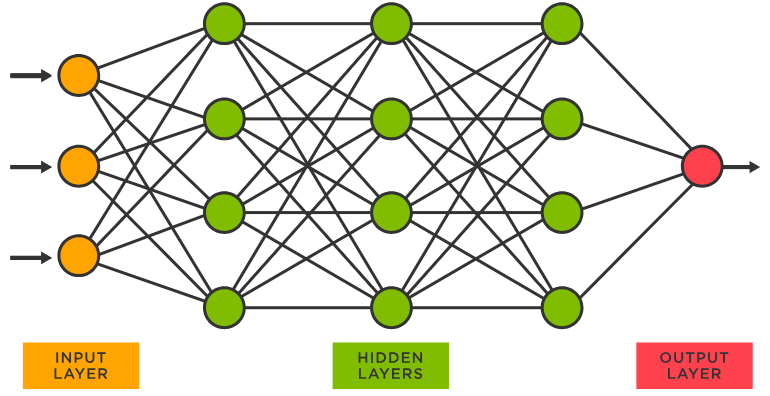The Anatomy of Artificial Neural Networks (ANNs) and Their Functionality
 Rhythm Rawat
Rhythm RawatArtificial neural networks (ANNs) are a subset of machine learning and are at the heart of deep learning algorithms. Their name and structure are inspired by the human brain, mimicking the way that biological neurons signal to one another. In the previous blog, we understood the basic concept behind neural networks. In this article, we will be covering the working of ANN. So, let's dive in.

How does an Artificial Neural Network Learn?
Artificial neural networks rely on training data to learn and improve their accuracy over time. However, once these learning algorithms are fine-tuned for accuracy, they are powerful tools allowing us to classify and cluster data at a high velocity.
The learning process of an ANN involves adjusting the weights and thresholds of the nodes based on the feedback from the output layer. This feedback can be either supervised or unsupervised, depending on whether the desired output is known or not.
In supervised learning, the network is given a set of input-output pairs, and it tries to learn a function that maps the input to the output. The network compares its predicted output with the actual output and calculates an error measure. The error measure is then used to update the weights and thresholds of the nodes using a learning rule, such as gradient descent or backpropagation.
In unsupervised learning, the network is given only a set of inputs, and it tries to discover patterns or features in the data without any guidance. The network can use different criteria to update its weights and thresholds, such as minimizing entropy, maximizing mutual information, or maximizing likelihood.
What are some Applications of Artificial Neural Networks in Deep Learning?
ANNs are widely used in deep learning, which is a branch of machine learning that deals with complex and high-dimensional data. Deep learning involves creating multiple layers of ANNs that can extract features and representations from raw data, such as images, text, speech, or audio.
Some examples of applications of ANNs in deep learning are:
Image recognition: ANNs can be used to identify objects, faces, scenes, or emotions in images. For example, Google's search algorithm uses ANNs to provide relevant image results based on keywords.
Natural language processing: ANNs can be used to understand, generate, or translate natural language. For example, Google Translate uses ANNs to translate text or speech from one language to another.
Speech recognition: ANNs can be used to recognize spoken words or commands. For example, Siri uses ANNs to understand and respond to voice queries from users.
Recommendation systems: ANNs can be used to provide personalized suggestions or recommendations based on user preferences or behaviour. For example, Netflix uses ANNs to recommend movies or shows based on user ratings or watch history.
Summary of ANNs working
Artificial Neural Networks (ANNs) consist of interconnected nodes called neurons organized into layers.
Random values for weights and biases are taken
The input is multiplied by the weights and added with the bias
Neurons apply activation functions to the inputs.
Data flows through the network via forward propagation from the input layer to the output layer.
The loss function quantifies the difference between predicted and expected output.
Backpropagation adjusts the weights based on the calculated gradient of the loss, reducing the loss over time.
Training involves iterative weight adjustments using forward propagation, loss calculation, and backpropagation.
ANNs learn to recognize patterns and make predictions on labelled datasets.
Conclusion
ANNs are a powerful tool for machine learning and deep learning that can learn from data and make predictions about new data. They are inspired by the human brain and consist of interconnected nodes that process information and pass it along to other nodes. They can learn from supervised or unsupervised feedback and can be applied to various domains such as image recognition, natural language processing, speech recognition, or recommendation systems.
Subscribe to my newsletter
Read articles from Rhythm Rawat directly inside your inbox. Subscribe to the newsletter, and don't miss out.
Written by

Rhythm Rawat
Rhythm Rawat
Machine learning enthusiast with a strong emphasis on computer vision and deep learning. Skilled in using well-known machine learning frameworks like TensorFlow , scikit-learn and PyTorch for effective model development. Familiarity with transfer learning and fine-tuning pre-trained models to achieve better results with limited data. Proficient in Python, Machine Learning, SQL, and Flask.